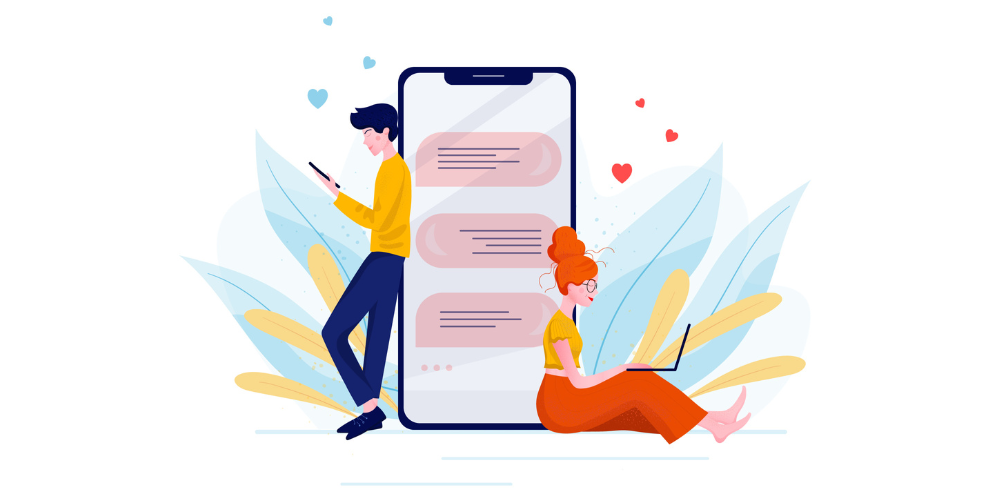
In today’s digital age, businesses are constantly seeking innovative ways to connect with their customers and drive growth. One platform that has emerged as a powerful tool for marketing and customer engagement is WhatsApp. With over 2 billion users worldwide, WhatsApp offers a unique opportunity for businesses to reach their audience directly and build meaningful relationships.
In this blog post, we will explore the world of WhatsApp marketing and automation, delving into the basics of using WhatsApp for business, setting up a business account, developing a marketing strategy, and leveraging automation tools to streamline your efforts. Join us as we uncover the potential of WhatsApp as a key player in your marketing arsenal.
Understanding the Basics: Why WhatsApp for Business?
Reach a Wider Audience
Direct and Personalized Communication
Cost-Effective Marketing Channel
Enhanced Customer Support
Higher Engagement and Conversion Rates
Competitive Advantage
How to Set Up Your WhatsApp Business Account?
Why a Business Account is Necessary?
Steps to Set Up Your Business Profile
- Download and Install WhatsApp Business App: First, download the WhatsApp Business app from the respective app store (available for both Android and iOS devices). Install the app on your smartphone or tablet.
- Agree to Terms and Conditions: Launch the WhatsApp Business app and agree to the terms and conditions to proceed with the setup.
- Verify Your Phone Number: Enter your business phone number and verify it by entering the verification code sent to that number via SMS.
- Restore Data (Optional): If you have an existing WhatsApp account with a chat history and contacts that you want to transfer to your business account, you can choose to restore the data at this stage.
- Set Up Your Business Profile: Now it’s time to create your business profile. Enter your business name, choose a profile picture, and provide a brief description of your business.
- Customize Additional Business Information: WhatsApp Business allows you to provide various details about your business, such as your address, business hours, website, and email address. Take advantage of these customization options to provide as much information as possible to your customers.
Tips for Optimizing Your Business Profile
- Use a Clear and Professional Profile Picture: Choose a profile picture that represents your brand and is easily recognizable. It could be your logo or a high-quality image related to your business.
- Craft a Compelling Business Description: Write a concise and compelling description that highlights what your business does and what value you offer to customers. Keep it concise but informative.
- Provide Accurate Contact Information: Ensure that your contact information, such as your business address, phone number, and website, is accurate and up to date. This enables customers to easily reach out to you and find more information about your business.
- Enable Quick Replies: Utilize the quick replies feature to create pre-set responses to commonly asked questions. This saves time and ensures consistent and efficient customer support.
- Utilize Labels for Organization: WhatsApp Business allows you to label chats with different categories such as “New Leads,” “Customer Support,” or “Pending Payments.” Use labels to keep your conversations organized and easily accessible.
Developing a WhatsApp Marketing Strategy
Understanding Your Target Audience
- Demographics: Analyze the demographics of your target audience, such as age, gender, location, and interests. This information helps you tailor your messages to resonate with your audience.
- Pain Points: Identify the pain points and challenges your audience faces. Understanding their needs and desires allows you to provide relevant and valuable content.
- Communication Preferences: Determine how your audience prefers to communicate. Some may prefer quick and concise messages, while others may appreciate detailed updates. Align your messaging style with their preferences.
Crafting Effective Marketing Messages
- Clear and Concise: Keep your messages clear and concise to capture your audience’s attention. Avoid lengthy paragraphs and focus on delivering your message effectively in a few sentences.
- Personalization: Personalize your messages whenever possible. Address your customers by their names and tailor your content based on their preferences and behaviors.
- Value Proposition: Clearly communicate the value proposition of your products or services. Highlight how your offerings solve your customers’ problems or fulfill their desires.
- Call to Action: Include a clear and compelling call to action (CTA) in your messages. Encourage your customers to take a specific action, such as making a purchase, signing up for a newsletter, or contacting your business.
Best Time and Frequency to Send Messages
- Optimal Timing: Research and analyze when your target audience is most active and likely to engage with your messages. Experiment with different timings to find the optimal time slots.
- Avoiding Spam: Be mindful of not overwhelming your audience with excessive messages. Find the right balance between staying in touch and avoiding spamming their inbox.
Leveraging WhatsApp Features
- Broadcast Lists: Utilize the broadcast lists feature to send messages to multiple contacts simultaneously. This allows for personalized messaging without revealing other recipients.
- Group Chats: Create groups related to specific interests or customer segments. Engage in conversations, provide exclusive updates, and foster a sense of community among your customers.
- Status Updates: Utilize WhatsApp’s status feature to share engaging content, such as images, videos, or short updates. This can be an effective way to capture attention and drive engagement.
Ensuring Compliance and Privacy
Automating Your WhatsApp Marketing
What is WhatsApp Automation?
Benefits of WhatsApp Automation
- Time and Resource Savings: Automation eliminates the need for manual and repetitive tasks, freeing up time and resources for other important business activities.
- Improved Efficiency: With automation, you can send personalized messages to a large number of customers simultaneously, ensuring consistent and timely communication.
- Enhanced Customer Experience: Automation allows for quick responses and personalized interactions, leading to a better customer experience and increased satisfaction.
- Scalability: As your business grows, automation enables you to handle a larger volume of customer interactions without compromising quality.
How to Set Up WhatsApp Automation?
- Research and Choose an Automation Tool: Explore different automation tools available in the market and select one that meets your business needs. Consider factors such as features, pricing, and ease of use.
- Integrate WhatsApp with the Automation Tool: Connect your WhatsApp Business account with the chosen automation tool using the provided integration options. Follow the tool’s instructions for a seamless connection.
- Define Automation Rules: Configure automation rules based on your marketing objectives. Determine the triggers, actions, and conditions that will initiate automated messages or responses.
- Create Message Templates: Develop pre-defined message templates for different scenarios, such as welcome messages, order confirmations, or appointment reminders. Customize these templates with dynamic variables for personalization.
- Test and Optimize: Before deploying your automation, thoroughly test the setup to ensure it functions as intended. Make necessary adjustments and optimizations based on feedback and analytics.
Best Practices for WhatsApp Automation
- Personalization: While automation allows for bulk messaging, strive for personalization by using dynamic variables, addressing customers by name, and tailoring messages to their preferences.
- Timing and Frequency: Be mindful of the timing and frequency of automated messages. Avoid bombarding customers with excessive messages and ensure you are sending them at appropriate times.
- Human Touch: While automation is useful, remember to maintain a human touch. Encourage customers to reach out for personalized support and ensure that there is a human representative available for more complex queries.
- Compliance: Adhere to WhatsApp’s terms of service, privacy regulations, and anti-spam policies. Ensure that your automated messages are compliant and do not violate any guidelines.
Measuring and Improving Your WhatsApp Marketing Efforts
How to Track Your WhatsApp Marketing Results?
- Message Metrics: Utilize the built-in analytics provided by WhatsApp Business to track metrics such as the number of messages sent, delivered, read, and responded to. This data provides insights into the engagement and response rates of your messages.
- Link Tracking: Use URL shorteners or trackable links to monitor the click-through rates of links shared in your WhatsApp messages. This helps you understand which links are generating the most interest and driving traffic to your website or landing pages.
- Coupon Codes or Promo Tracking: Implement unique coupon codes or promotional offers specific to your WhatsApp marketing campaigns. By tracking the usage of these codes, you can measure the success of your campaigns in terms of conversions and sales.
Using Analytics to Improve Your Strategy
- Engagement Analysis: Analyze the engagement metrics to understand which types of messages, content, or offers resonate the most with your audience. Identify patterns and trends to tailor your future messages accordingly.
- Conversion Tracking: Track the conversion rates of your WhatsApp marketing campaigns by monitoring the number of leads generated, sales made, or desired actions taken. Identify areas where conversions can be improved and optimize your approach.
- Customer Feedback: Collect feedback from customers through surveys or direct conversations to understand their satisfaction levels, pain points, and suggestions for improvement. Use this feedback to refine your messaging and enhance the customer experience.
Case Studies of Successful WhatsApp Marketing
In conclusion, WhatsApp marketing offers immense potential for businesses to connect with their audience, provide personalized experiences, and drive conversions. By understanding the basics of WhatsApp for business, setting up your business account, developing a comprehensive marketing strategy, leveraging automation, and measuring your results, you can unlock the full power of WhatsApp as a marketing tool. Embrace this platform and embark on a journey to propel your business forward in the digital era.

